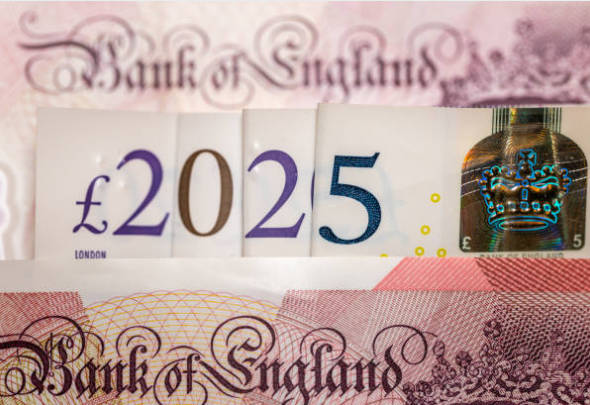The Bank of England's interest rate decision is due tonight. Market participants expect the Monetary Policy Committee to stand pat and keep the Bank Rate at 4.00 per cent, but investors are increasingly pricing the possibility of a cut in the coming weeks.
This article explains the context behind the decision, the data the MPC will weigh, the likely market and household implications, and the scenarios to watch immediately after the announcement. I have used the latest published data and market commentary to ensure the piece is highly relevant to tonight's decision.
BoE Interest Rate Tonight

The Bank Rate is 4.00 per cent going into tonight's announcement. Headline consumer price inflation has moderated from earlier peaks and stood at 3.8 per cent in recent official releases, a level below many economists' earlier forecasts but still well above the Bank of England's 2.0 per cent target. [1]
Market pricing shows a significant probability that the MPC will hold today, while investors have raised bets on the timing of the next cut.
What the MPC Decides and How it Decides
The Monetary Policy Committee meets to set the Bank Rate and to give guidance on the likely path of policy. The committee balances the mandate to return inflation to the 2.0 per cent target with the need to support sustainable growth and employment.
The MPC examines a wide set of indicators including the latest consumer prices, wage growth, unemployment, output and global developments. Statements and any vote split in the committee are closely watched because they reveal how members view the trade off between inflation and growth.
Key Economic Data Shaping Tonight's BoE Interest Rate Decision
The MPC will have considered several recent data points and external developments. The most relevant are:
Consumer price inflation.
Headline CPI has been trending down from higher readings in 2024 and early 2025 and has recorded readings around the high 3 per cent area in recent months. The Bank will be focused on whether disinflation continues. [2]
Labour market dynamics.
The BoE places weight on wages and employment. Any signs that wage growth is slowing materially or that unemployment is rising will influence the committee's willingness to cut rates.
Growth indicators and geopolitical risks.
Weakness in GDP or renewed external shocks can push the BoE towards earlier easing. Conversely, stronger than expected growth or persistent services inflation may counsel patience.
Below is a concise table summarising the most load bearing metrics that market participants have focused on ahead of tonight.
| Indicator |
Most recent official / market reading |
Why it matters for the BoE |
| Bank Rate |
4.00 per cent. |
The current policy stance going into the meeting. The MPC can keep, cut or raise from here. |
| Consumer Prices Index (CPI) |
c. 3.8 per cent (recent monthly releases). |
Inflation remains above the 2.0 per cent target but has eased from earlier peaks. The pace of ongoing disinflation is critical. |
| Market-implied odds of a cut |
Non-zero; swaps and options price some chance of a 25 bps cut within weeks. |
Markets now assign material probability to a near term cut, which influences sterling and yields ahead of the announcement. |
Recent Policy Moves and the Evolution of BoE Interest Rate Expectations

Since the peak policy rates of 2023 and early 2024. the Bank Rate has trended lower. The BoE has shifted from a period of aggressive hikes to a gradual easing cycle as inflation fell back.
Market commentators and major banks have widely expected a pause tonight, with the balance of opinion pointing to the Bank maintaining 4.00 per cent for now and possibly cutting later in the quarter if data continue to soften.
Reuters and other market outlets note that investors have raised the odds of an imminent cut, but the committee's language is likely to remain data dependent.
Use the table below to see the recent Bank Rate path that the BoE has managed since late 2023.
| Date of change |
Bank Rate at that date |
| 07 Aug 2025 |
4.00 per cent. |
| 08 May 2025 |
4.25 per cent. |
| 06 Feb 2025 |
4.50 per cent. |
| 07 Nov 2024 |
4.75 per cent. |
What Would Different Outcomes Tonight Mean for Markets and Households?
The BoE has three obvious options. Each has distinct implications.
1. Hold at 4.00 per cent.
If the MPC keeps Bank Rate unchanged, the market will interpret the decision as data dependent and likely cautious. A hold would suggest the committee is waiting for clearer evidence of durable disinflation or for labour market weakness to become more obvious. [3]
Sterling may be relatively stable, although volatility can spike around the statement if the language differs from expectations.
2. Cut by 25 basis points to 3.75 per cent.
A cut tonight would be a tighter than expected move relative to some commentators and would likely be justified by clearer signs of slowing activity or easing wage pressures.
A cut would generally reduce mortgage rates over time if banks pass reductions through and could weigh on sterling initially while lifting risk assets. Market pricing suggests some participants think a December cut is more likely than an immediate move, so a cut tonight could surprise and lead to sharp market adjustments.
3. Hike by 25 basis points.
A hike is highly unlikely given the current macro backdrop and market commentary. It would require renewed upside in inflation or an unexpected reopening in domestic demand. A hike would strengthen sterling and pressure bond yields.
The Vote Split and What it Reveals about BoE Interest Rate Intent

Investors pay close attention to any stated majority and the size of dissents. Recent market commentary has suggested the committee remains split between a majority that prefers patience and a small minority who favour earlier easing.
A narrow vote split in favour of holding indicates the MPC expects future moves to be conditional on incoming data rather than pre-committed.
If the minutes or the statement disclose clear dissenters in favour of a cut, markets will take that as a sign that a near term cut remains on the table. TradingEconomics and other market trackers have noted prior vote splits and their signalling value.
Immediate Market Reactions to Monitor after the BoE Interest Rate Announcement
These are the responses that traders, wealth managers and corporate treasurers will monitor in the minutes after the decision.
Sterling currency moves against the dollar and euro. A dovish tilt or an unexpected cut usually weakens sterling.
Short-term government bond yields and the swaps curve. Expectations of earlier cuts push gilts lower in yield and flatten the yield curve.
Bank and mortgage market commentary. Investors will watch how quickly retail deposit and mortgage rates move in response.
Four Practical Scenarios for Households and Businesses after Tonight's BoE Interest Rate Decision
Hold and gradual cuts later.
Households should expect mortgage rates to fall gradually only if banks choose to pass cuts through. Businesses should plan for subdued demand and lower financing costs eventually.
Immediate cut.
Borrowers could see faster relief on variable-rate debt, but savers may face lower deposit rates. Corporates might accelerate refinancing plans.
Market surprise dovish tone without an actual cut.
This would push market-implied rates lower and could produce a rapid move in sterling and gilts. Plan for short-term volatility.
Hawkish surprise.
This is unlikely. If it occurs, borrowing costs could rise and asset markets could correct.
Frequently Asked Questions
Q1: Why does the BoE change the Bank Rate and what does it control?
The Bank changes the Bank Rate to influence borrowing and saving costs across the economy. The aim is to keep inflation near the 2.0 per cent target while supporting sustainable growth and employment. The Bank Rate is the central policy instrument the MPC uses to achieve that mandate.
Q2: If inflation is still above target, why are markets talking about cuts?
Markets anticipate policy shifts based on inflation and growth trends. Signs of disinflation and a weaker labour market may prompt expectations of BoE easing, though the committee must balance inflation risks against potential harm to growth.
Q3: How quickly do changes in the BoE Interest Rate affect mortgages and savings?
Transmission is gradual. Banks and building societies adjust retail rates at varying speeds and margins. Variable and tracker borrowers feel changes quickly, fixed-rate borrowers when they remortgage or new offers change, while savers see deposit rates adjust more slowly.
Q4: What should I watch for in the BoE press statement and minutes tonight?
Watch for comments on inflation risks, wage growth, services inflation, and guidance on future cuts. The vote split and MPC's view on global developments will be key, as markets will scrutinise any hint on the likelihood of cuts in December or later.
Conclusion
Tonight's decision matters because it will set the near term policy tone for the British economy. A hold will signal caution and keep the emphasis on data dependence.
A cut would mark a material shift to easing now and would have immediate market and household consequences. After the announcement, watch the vote split, the statement language and the market reaction in sterling and gilts.
Over the next weeks, pay attention to inflation prints, wages data, and any commentary from the BoE that clarifies whether December is the next likely move.
Sources:
[1]https://www.bankofengland.co.uk/boeapps/database/Bank-Rate.asp
[2]https://tradingeconomics.com/united-kingdom/inflation-cpi
[3]https://www.reuters.com/business/finance/bank-england-set-tight-rates-decision-inflation-softens-budget-looms-2025-11-06/
Disclaimer: This material is for general information purposes only and is not intended as (and should not be considered to be) financial, investment or other advice on which reliance should be placed. No opinion given in the material constitutes a recommendation by EBC or the author that any particular investment, security, transaction or investment strategy is suitable for any specific person.



























